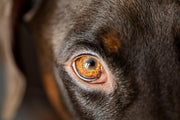
It can be stressful to have a picky eater dog nowadays, with the variety of dog food available. If your dog doesn't like this type of dry food, you will buy a different kind only to find out they still won't touch it.
You end up trying wet food or supplements, and it's hard to understand which food will get your dog to eat consistently.
Sometimes, your new mix will get them interested for a day or two, and then it's back to normal. But, do not worry, as there are still many solutions to help your picky eater eat.
Look into food allergies

I will order this article in the same order you should try things out. Please don't skip the more challenging steps to look for easy solutions as they might not fix your situation once and for all.
Instead, first, look at deep-rooted causes that could explain this behavior. Then, if they are not the reason why your dog isn't eating, we will cover the other solutions.
The first thing to look at is the current food you are feeding your dog. If your dog has allergies (flaky skin, hot spots, dry paws, etc.), it may be because of their food. I wrote an entire article on food allergies and how to identify them. You can start there.
If your dog doesn't have allergies, their current diet ingredients are probably not at fault.
Schedule a vet visit

Before we try some proven picky-eater methods, you should schedule a vet visit to ensure there is nothing wrong with your dog. Specifically, dogs can get teeth and gum pain, resulting in them eating less.
If your dog has always been a picky eater, you can probably rule out this scenario. However, it's never a bad idea to do a check-up and get some additional advice from your vet.
Increase exercise

I don't know about you, but I always feel like I'm starving about an hour after exercising. Of course, I can't eat right after as my body is still recuperating. But after a while, that's when the hunger kicks in.
Take your dog for a run or a long walk. I wrote an article on how long to walk your dog based on their size and breed. For example, if you walk your dog at 7 am, you might feed them at 9 am.
Check your dog's weight
Have you checked if your dog's weight was within range for their breed? You can look at our " How heavy should my dog be " since it has a massive table with most breeds. Only a few dogs are underweight. Unfortunately, many are slightly or entirely overweight. Dog obesity may lead to health issues.
Weight is not directly linked to picky eating; however, this is also an opportunity to review their food portion and increase or decrease it accordingly.
Vet-recommended fool-proof feeding method

Now that we cleared food allergies, exercise, weight, and the vet visit, it's time to look into the fool-proof feeding method.
You may have tried something similar already. Read the whole method before saying, "I've done this; it doesn't work."
With many picky eaters, all it takes to overcome this issue is a little persistence.
While trying this, always keep water available.
Step 1: stop feeding your dog several foods and table scraps
Dogs can be like children sometimes. They will not jump on their Brussel sprouts if they know ice cream is around the corner. You may have got into alternating several dog foods and treats and adding table scraps to make their food more appetizing.
Consider that this can be perceived as an A la carte restaurant in your dog's eyes. For example, your dog may think: "I'm not that hungry, and I know tomorrow will be my favorite wet food with peanut butter."
To test this method properly, start feeding your dog only one type of food and don't add anything extra to it.
You may have trained your dog to be a picky eater, and it's now time to untrain them.
Step 2: feed & take away.
Put out your dog's food for 30 minutes. Then, take away what he doesn't eat. Depending on what you feed your dog, this may lead to waste. Kibble is fine, of course. However, if you are feeding your dog wet food, you may only serve a smaller portion and keep the food refrigerated afterward.
Step 3: feed at the next scheduled time.
Dogs like routine. Feed them at set times. Take the food out and leave it for 30 minutes when it's time to eat again. Then, take away anything left after that time.
Step 4: do not give in.

As great as this method is, it requires persistence. Dogs can go without eating for days without harming their health. Remember that dogs descend from wolves, and wolves usually don't eat every day. Based on my experience and research, picky eater owners report that their dog will not eat the first day or two using this method. It's normal: keep going as the miracle could be around the corner on Day 3.
If your dog is hungry, he will eat. Tell other people in your household not to give him treats while doing this.
Step 5: you are helping your dog live a longer life.
Your dog will be disappointed and start to understand he might not get his way. You are the boss! You set the standards. Children can't have candy on their plate at every meal, and you're just putting the same standards for your pet.
By not adding anything extra to their food, you keep your pet healthy and at a proper weight. As a result, your pet will live longer, thanks to you.
As a side benefit, there might come a time when you need to supplement your dog's diet for health reasons. Of course, picky eaters will resist, but your dog won't.
Step 6: quiet dinner time.
Whether your dog is eating his food, don't let other people interrupt him at dinner time. The easiest way to reward a dog is to give them attention. Therefore, giving them attention when they are not eating rewards that behavior.
Step 7: stick to a schedule.
Consistency is key here. Follow your vet's recommendation for the number of times your dog should eat daily. It might be 2 to 3 times a day for a puppy.
Step 8: enjoy your dog's improved behavior.
It might take longer than anticipated, but this method works. The only times when it wouldn't work are:
- If your dog has a medical condition. Remember to visit your vet first before doing this.
- If your dog's food causes allergies. We covered this first.
I want to emphasize that this method takes a while. I read a lot of posts about people trying this and giving up the same day or the next.
Veterinarians agree that healthy dogs can go 3 to 5 days without eating. You can even ask your vet when you visit them to approve of this method and confirm that it is ok to try for a few days.
If you want a shortcut

You might not want to change your dog's behavior, or maybe everything has already failed, and you feel like you are out of options. I hear you! I have a compiled a shortlist of successful attempts by picky eater owners and what worked for them:
- If you are feeding your dog kibble, mix in a little bit of wet food.
- Add something to their food:
- Salmon oil. I have included the link to the one we sell, although you are more than welcome to do your research. Nine pets out of ten can't get enough of salmon oil!
- Raw egg yolk
- Coconut oil
- Peanut butter
- Try feeding your dog while he is in his closed crate. Some dogs will only eat when they feel safe.
- If you are feeding your dog kibble, add water. You can add as much as necessary to slightly float the kibble. Try warm water too, and chicken broth (with no salt added) for extra flavor.
- Upgrade your dog's food to wet, raw, or home cooking. This can be more expensive and time-consuming but will also work better.
Comment below with your successful and failed attempts to get your dog to eat so I can add them to my article!




